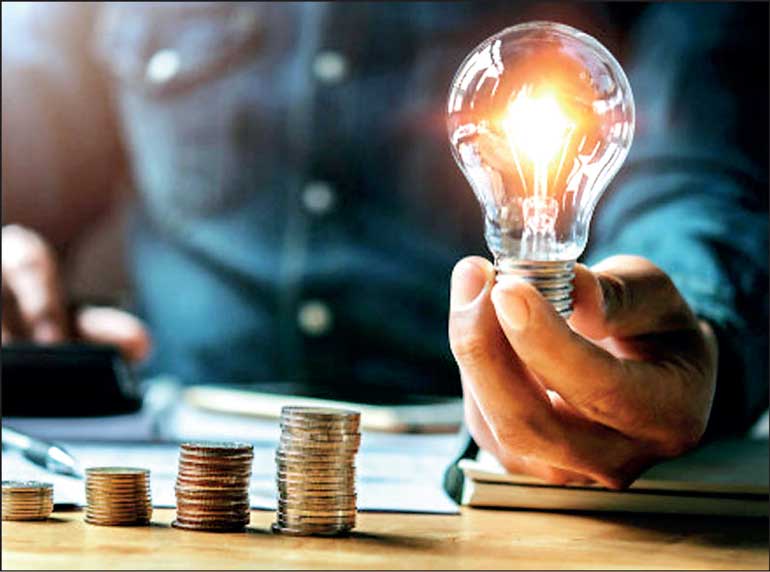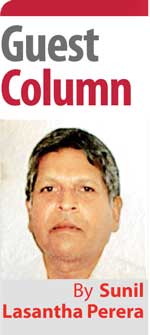
 An 8% increase of the current tariff is not a basis. Tariff has to be calculated and use absolute numbers.
An 8% increase of the current tariff is not a basis. Tariff has to be calculated and use absolute numbers.
An outline of the methodology is given below:
- Affordable tariffs using cross subsidy from high income groups to low income groups should be the basis for tariff development;
- First step is to calculate costs. There are 7 types of costs. O&M cost recovery scenario is the lowest. Use it for low income categories. Last scenario is the total costs including overheads plus a cross subsidy (to low income groups) and use this scenario for high income groups (households HH and businesses);
- Electricity coverage in Sri Lanka is nearly 100%. It is commendable. Africa and South Asian countries are no where near it;
- With nearly 100% connectivity comes the affordability problems by low income families. Ceylon Electricity Board (CEB) has to navigate through troubled waters and make operations viable while protecting poor families;
- Average cost is Rs. 54/KwH or unit;
- Domestic tariff (progressive)/month: include <30 units Rs. 30/unit; 31-60 is Rs. 37; 60-90 is Rs. 42 (cut off point for low mid income families); 90-180 Rs. 50; >180 Rs. 75/unit;
- CEB billing/month: Domestic <30 units consumption/month – 1.4 million households which is the Aswesuma/Samurdhi beneficiaries; <90 units/month – 5 million households. 5 million households cover low and mid income households where affordability/ability to pay is a problem for them. Their current tariff is already below cost and it should remain that way;
- Types of cost recovery: (a) O&M costs only (b) O&M + overheads (c) O&M + overheads + debt service (exclude interest and depreciation costs under this scenario to avoid double counting) (d) recover all expenses or total costs (e) recover total costs + cross subsidy (to benefit poor families);
- Apply (a) O&M cost/unit for domestic households consuming <30 units per month (b) apply total costs/unit for >for 60-90 units/month category (c) apply total cost + cross subsidy for >90 units/month for this affordable high income households;
- Apply above cost principles for non domestic users, depending on their affordability and ability to pay;
- Have new tariff categories for the following high income households/businesses and apply the total cost recovery tariff + cross subsidy scenario for: (a) luxury condo apartments (b) casinos (c) 4-5 star class hotels (d) buildings with >30 floors. No need to subsidise these groups/businesses;
- Affordability, Ability to pay, Willingness to pay: (a) Affordability: Asian Development Bank (ADB), threshold is 4% of household income can afford to pay for utilities (electricity, water, gas); (b) Ability to pay: Household income
- Disconnections should be the last resort. Don’t start the collection process by disconnections. Red Notices are alright. Defaulters should be allowed to apply for deferment of payment by referring to a CEB Customer Welfare Committee to consider on a case by case basis. Work with the defaulters and not against them. CEB could make a list of deserving defaulters and apply to the Government to settle these outstanding bills of vulnerable households by a Government revenue grant. Once the Government grant received, customer accounts have to be credited as settlement;
- CEB customer welfare committee could find sponsors to pay electricity bills of selected low income families and religious places, Government schools, orphanages. The sponsors should not be asked to sign any documents where there can be legal implications. It is strictly voluntary;
- Reduce CEB costs: (a) Reduce overhead expenses. When staff leave, reallocate duties among current staff and avoid replacements (b) Avoid wastages and excess expenses (c) Get customers to conserve energy by switching off unnecessary lights or pay the bills;
- Hydropower has the cheapest cost of electricity generation and has a capacity of 40% total electricity generation in the country. Coal is next. Solar and wind power has to be purchased by CEB. Thermal/fuel is the most expensive. These sources have different unit costs for electricity generation;
- Request to CEB for consideration: Water catchment and hydro power generation areas (e.g. Victoria, Kotmale, Luxapana, etc.), where most vulnerable poor families and Tea Angels live. Can CEB consider giving a special hydropower tariff for these families in catchment areas?
- Once the tariff structure is developed, the tariff numbers have to be massaged to make CEB operations viable;
- Once affordable tariff structure is developed and implemented, stay with it and avoid tariff revisions. People get used to it with time and they resist change.
(The writer is a Chartered Accountant, MBA, and author of 3 non-political books. He worked in USA for 25 years on USAID, World Bank, ADB and inter-American bank projects, and was based in Washington DC for 7 years, Russia 5 years, Afghanistan 10 years. He worked in 20 countries worldwide on donor funded development projects.)

 An 8% increase of the current tariff is not a basis. Tariff has to be calculated and use absolute numbers.
An 8% increase of the current tariff is not a basis. Tariff has to be calculated and use absolute numbers.